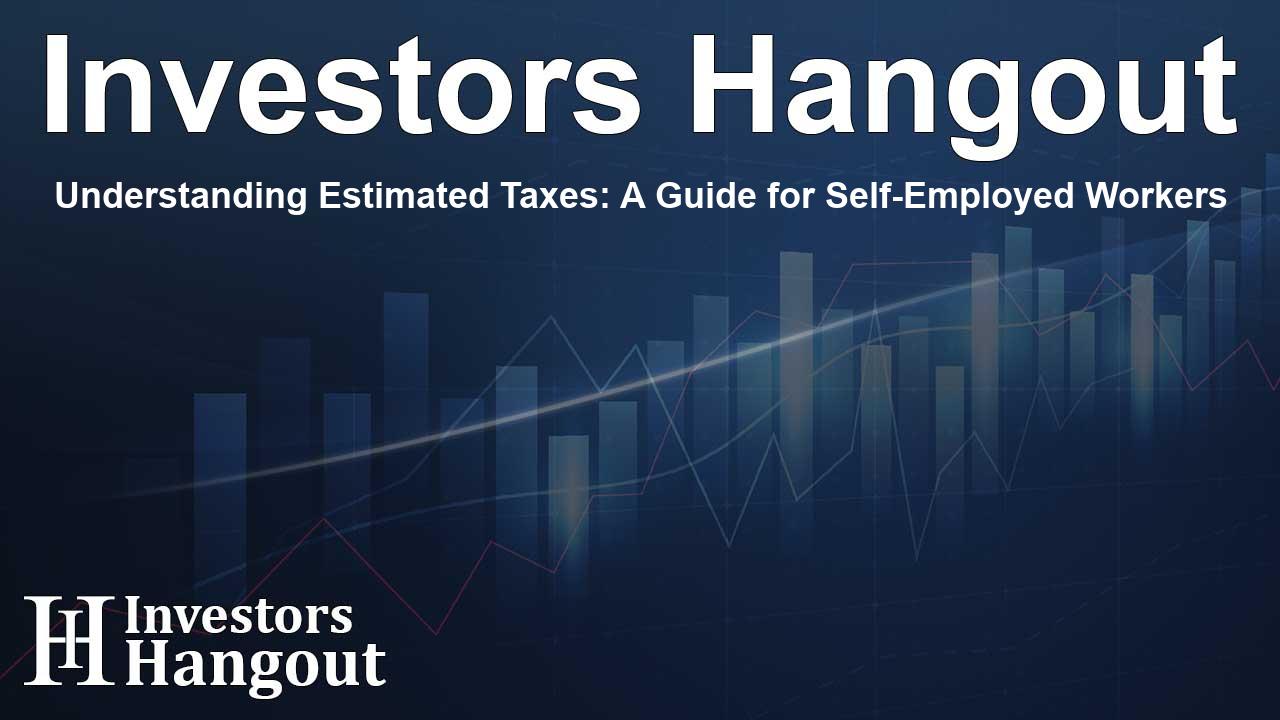Understanding Estimated Taxes: A Guide for Self-Employed Workers

Understanding Estimated Taxes
Filing your taxes can feel overwhelming, particularly if you're self-employed, freelancing, or working in the gig economy. Unlike traditional employees, who have their taxes withheld from paychecks, self-employed folks need to estimate and pay their taxes quarterly. This guide aims to clarify the rules and requirements so you can handle your tax obligations confidently.
What Are Estimated Tax Payments?
Estimated tax payments are those made periodically to the IRS on income that doesn’t have taxes withheld. The U.S. tax system operates on a pay-as-you-go basis. This means you’re expected to pay your taxes as you earn your income, rather than waiting until tax day.
If you have a W-2 job, your employer automatically deducts taxes from your paycheck, which removes the necessity for quarterly payments. However, if your income stems from other sources, it’s essential to ensure you're making the required estimated tax payments.
Typical income sources that necessitate estimated tax payments include:
Self-employment income
Interest income
Dividend payments
Capital gains from selling assets
Alimony
Prizes and awards
If enough taxes are withheld from other income sources, you might not need to make estimated payments. Generally, you will need to pay estimated taxes if:
You expect to owe at least $1,000 to the IRS after accounting for withholdings and refundable credits.
The total amount withheld from your paychecks plus any refundable tax credits is less than either 90% of your anticipated tax bill for the year or less than 100% of what you paid in taxes last year.
For higher earners, the threshold increases, requiring you to pay 110% of last year's tax bill to avoid penalties.
Calculating Estimated Taxes
The IRS provides Form 1040-ES, which includes a worksheet to assist you in calculating your estimated tax payments based on your expected adjusted gross income. Here are two primary methods you can use to estimate your taxes:
Prior Year’s Earnings: If you owed $10,000 last year and expect similar earnings this year, you would plan to pay $2,500 quarterly. This method works well for those whose income remains consistent.
Current Income Basis: Alternatively, you can calculate your estimated taxes based on your current earnings. For example, if you earned $20,000 over three months with a 20% effective tax rate, your estimated payment for that quarter would be $4,000.
Keep in mind, self-employed individuals are responsible for both parts of Social Security and Medicare taxes, which total 15.3% for most workers. If you end up paying more than required, you can request a refund or apply it as credit for future estimated taxes.
Making Your Payments
You have various options for paying your estimated taxes:
For online payments, visit the official IRS website.
Utilize the Electronic Federal Tax Payment System (EFTPS).
Submit payments via bank wire transfer.
Transfer funds electronically.
Make payments by phone or mail a check.
Pay by cash at authorized IRS retail partners.
These methods are also available during tax season when you file your federal return.
The Penalties of Late Payments
Neglecting to make your estimated tax payments can lead to interest on the unpaid balance and potential penalties for underpayment. Typically, this penalty amounts to 0.5% of your total unpaid tax for each month it remains unpaid, capped at 25% of the total due. However, there are certain situations, like unexpected disasters or if you’ve retired or become disabled, where you might avoid these penalties.
If you’re unable to cover your estimated tax payments, pay as much as you can to reduce interest and penalties. Always remember that it’s better to file your return on time, even if you can’t pay the full amount owed, as failing to file can result in much heavier penalties.
Frequently Asked Questions
Are estimated tax payments mandatory?
Yes, generally speaking, if you expect to owe $1,000 or more after considering deductions and credits, you must make estimated tax payments, especially if you’re self-employed or have significant capital gains.
What happens if I don’t pay estimated taxes?
If you fail to pay, penalties and interest can accumulate on the unpaid balance, so it's important to budget these payments throughout the year.
How can I determine if I need to pay estimated taxes?
If your anticipated tax bill exceeds $1,000 for the year after withholdings, you usually need to make estimated payments, particularly if most of your income is derived from self-employment.
Can I adjust my payments throughout the year?
Definitely! You can adjust your estimated payments based on your current and expected earnings, offering you flexibility in your financial planning.
What if I overpay my estimated taxes?
If you overpay, you can either receive a refund or apply the excess toward your next estimated tax payment.
About The Author
Contact Caleb Price privately here. Or send an email with ATTN: Caleb Price as the subject to contact@investorshangout.com.
About Investors Hangout
Investors Hangout is a leading online stock forum for financial discussion and learning, offering a wide range of free tools and resources. It draws in traders of all levels, who exchange market knowledge, investigate trading tactics, and keep an eye on industry developments in real time. Featuring financial articles, stock message boards, quotes, charts, company profiles, and live news updates. Through cooperative learning and a wealth of informational resources, it helps users from novices creating their first portfolios to experts honing their techniques. Join Investors Hangout today: https://investorshangout.com/
The content of this article is based on factual, publicly available information and does not represent legal, financial, or investment advice. Investors Hangout does not offer financial advice, and the author is not a licensed financial advisor. Consult a qualified advisor before making any financial or investment decisions based on this article. This article should not be considered advice to purchase, sell, or hold any securities or other investments. If any of the material provided here is inaccurate, please contact us for corrections.
